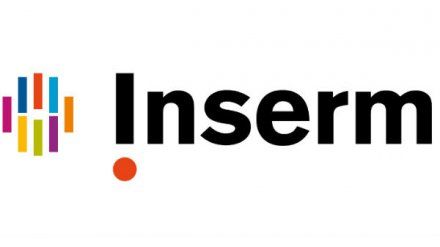Request Demo
Last update 08 May 2025
MIF x NLRP3
Last update 08 May 2025
Related
2
Drugs associated with MIF x NLRP3Target |
Mechanism MIF inhibitors [+1] |
Originator Org. |
Inactive Indication |
Drug Highest PhasePreclinical |
First Approval Ctry. / Loc.- |
First Approval Date20 Jan 1800 |
Target |
Mechanism MIF inhibitors [+1] |
Active Org.- |
Originator Org. |
Active Indication- |
Inactive Indication |
Drug Highest PhaseDiscontinued |
First Approval Ctry. / Loc.- |
First Approval Date20 Jan 1800 |
100 Clinical Results associated with MIF x NLRP3
Login to view more data
100 Translational Medicine associated with MIF x NLRP3
Login to view more data
0 Patents (Medical) associated with MIF x NLRP3
Login to view more data
31
Literatures (Medical) associated with MIF x NLRP301 Jan 2025·BioMed research international
Molecular Mechanisms of Intervertebral Disc Degeneration Induced by Propionibacterium acnes.
Review
Author: Chen, Huan ; Miao, Haixiong ; Li, Shaojin ; Lin, Jinzhi ; Tan, Yong ; Ye, Dongping ; Yang, Weichao ; Xu, Yude
01 Nov 2024·International Immunopharmacology
MIF aggravates experimental autoimmune prostatitis through activation of the NLRP3 inflammasome via the PI3K/AKT pathway
Article
Author: Feng, Rui ; Zhang, Fei ; Zhang, Song ; Liang, Chaozhao ; Meng, Tong ; Zhang, Meng ; Jin, Chen ; Meng, Jialin
31 Dec 2023·Hematology
Polymorphisms of inflammation-related genes and susceptibility to childhood leukemia: evidence from a meta-analysis of 16 published studies
Review
Author: Tang, Xiufu ; Liu, Cui ; Zeng, Qiuping ; Ren, Haoyan ; Xie, Yongwu ; Liu, Ting
1
News (Medical) associated with MIF x NLRP318 Jul 2022
Completion of IND enabling studies with lead compound MFC-1040 by late 2022
Target for series B round financing by early 2023 to fund clinical development
GOSSELIES, Belgium, July 18, 2022 /PRNewswire/ --
Apaxen S.A., a privately-held biotechnology company, developing novel next generation NLRP3 inflammasome inhibitor drugs for treatment of chronic inflammatory and auto-immune diseases, announced today that it has appointed Graham K. Dixon, PhD as Chairman of its Board of Directors and that it is preparing for clinical testing of its lead product MFC-1040.
The appointment of Dr Graham Dixon as Chairman is an important step in the transformation of Apaxen from a pre-clinical to a clinical stage company. During his successful carreer in C-suite management positions at companies such as Galapagos, Addex Therapeutics and Mithra Pharmaceutical, he was instrumental to the regulatory approval of three pharmaceutical products, twelve proof of concept studies and ten clinical stage licensing deals. He is an experienced non-executive director and board chairman as well as an advisor to several venture capital organisations and their portfolio companies.
In addition, Apaxen expects to complete IND enabling pre-clinical testing of its lead NLRP3 inflammasome inhibitor MFC-1040 by end of 2022 and aims to raise series B round financing by early 2023 to fund the clinical development plans of the company.
Bart Wuurman, CEO of Apaxen, stated:
"We are very pleased to welcome Graham as Chairman of Apaxen's Board of Directors with his experience and extensive track record of leading biotechnology companies through strategic periods of growth. He will be a great asset for the company entering its phase of clinical development and we look forward to working with him."
Graham Dixon, newly appointed Chairman of Apaxen, comments:
"I am very excited to join the Apaxen team. With its novel approach to inhibiting NLRP3 inflammasomes, the Company is moving into the next stage of growth and we will be looking for new high quality investors to support the company financially. I look forward to guiding Apaxen during this exciting time in the Company's development and supporting the team to achieve our mission of helping patients with severe inflammatory and autoimmune diseases."
About Apaxen
Founded in 2018, Apaxen raised €5.4 million since its A round funding in 2019 from a syndicate of VC investors and with the support of the Walloon region to develop a pipeline of NLRP3 inflammasome inhibitors with a novel mechanism of action, for treatment of chronic inflammatory and autoimmune diseases.
Apaxen's clinical candidate MFC-1040 is an orally bioavailable and selective small molecule NLRP3 inflammasome inhibitor, which has demonstrated efficacy in multiple animal models of chronic inflammatory disease () and pulmonary fibrosis (). MFC-1040 acts by blocking the interaction between intracellular Macrophage Migration Inhibitory Factor (MIF) and NLRP3 to inhibit formation of NLRP3 inflammasomes (), key drivers of innate immunity and implicated in many inflammatory and auto-immune diseases. The novel Mode of Action of MFC-1040 has potential benefits for patients over other NLRP3 inflammasome inhibitors in clinical development.
The Apaxen team combines the experience required for clinical development of its products and is supported by a world-class team of scientific advisors.
Contacts
Apaxen
Bart Wuurman, CEO
T: +31 64 66 23 735
E: [email protected]
48, Rue Auguste Piccard,
B-6041, Gosselies, Belgium
LifeSpring Life Sciences Communication, Amsterdam, the Netherlands
Leon Melens
T: +31 6 538 16 427
E: [email protected]
Logo:
SOURCE Apaxen
Analysis
Perform a panoramic analysis of this field.
login
or

AI Agents Built for Biopharma Breakthroughs
Accelerate discovery. Empower decisions. Transform outcomes.
Get started for free today!
Accelerate Strategic R&D decision making with Synapse, PatSnap’s AI-powered Connected Innovation Intelligence Platform Built for Life Sciences Professionals.
Start your data trial now!
Synapse data is also accessible to external entities via APIs or data packages. Empower better decisions with the latest in pharmaceutical intelligence.
Bio
Bio Sequences Search & Analysis
Sign up for free
Chemical
Chemical Structures Search & Analysis
Sign up for free


